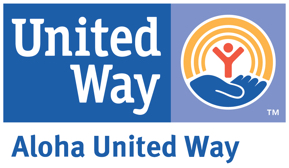Honolulu Star-Advertiser
People in houses get aid money
August 1, 2016
Print/online
The lion’s share of state dollars earmarked since April to provide direct, immediate aid in tackling Hawaii’s homeless crisis has gone to keeping struggling families in their homes versus getting homeless people off the street. In April the state awarded a $4.7 million contract to Aloha United Way to distribute the funds and bolster efforts to combat homelessness over the next year with immediate help for sheltering the homeless or assisting families at risk of homelessness.
The $4.7 million was intended to be evenly divided between Hawaii’s homeless and those at risk of becoming homeless, said Cindy Adams, president and CEO of AUW. As of July 22 AUW had distributed $852,069 of the state’s $4.7 million. Thus far, 78 percent of the money went to 281 families to keep them in their homes — providing one-time payments for rent, or deposits for security or utilities, said Norm Baker, AUW’s chief operating officer. Only 22 percent of the money so far has gone toward housing for 81 homeless households.
The majority of the 1,163 people benefiting from the funds — 72 percent — are on Oahu. Much of the imbalance between homeless families and those at risk is due to the requirement that anyone receiving the state money have a steady source of income — whether through a paycheck or government assistance. The trend “has been fairly consistent,” said Adams. “The split is so heavy on the prevention side.”
AUW’s data offer a glimpse into how many people are struggling in the islands, but also illustrate the difficulties in finding easy solutions to getting homeless people into housing. While the state money has kept more island families from becoming homeless, it is clearly not the sole answer to fixing Hawaii’s homeless problem, Adams said. “This is one small piece,” she said. “People are still looking for that overarching plan. ‘How are we going to get there?’”
In the latest Hawaii Poll, Lars Brennan, 47, of Kaneohe was among the 47 percent of likely Oahu voters who said that Hawaii’s homeless problem has gotten worse in the previous 12 months. But he said he understands how difficult it is to find long-term solutions. No single program, such as the $4.7 million in state funds being distributed through AUW, is going to work for every homeless person, Brennan said.
“Homelessness is complicated in so many ways,” Brennan said. “It’s all about individuals’ situations. (State financial aid) does help a specific person here or there. But it doesn’t help everyone. I’m all about helping people if they’re in a place to receive it and try to better themselves. If they’re not in that place and just happy to be where they’re at, then trying to help them is a moot point.”
Kakaako resident Ed Hampton said he is frustrated by the homeless people he continues to see every day from his condo, but understands the difficulty in getting money to people who won’t be able to keep up their rent payments on their own. “The way it’s being distributed now is the best way they can possibly do it,” Hampton said. “The reasoning is real. That’s the reality of living in the islands.” People who qualify for the state money must undergo financial literacy training to help manage their finances so they can stay housed, Baker said.
“We know for sure it’s (state financial aid) preventing them from becoming homeless,” Adams said. “What we don’t know is that two years from now, will they run into the same situation?” Families with housing that have received financial help through AUW average $2,405 in income per month, Baker said. By comparison, the average homeless family that qualifies for the state money receives just $1,966 per month, Baker said. The lopsided split between homeless families and those at risk is consistent with what the U.S. Department of Housing and Urban Development is seeing on the mainland.
In June HUD reported that 77.6 percent of government financial assistance went to keeping people housed across the country, compared with 23 percent that was distributed to actual homeless people. “It’s a pretty common split across the nation,” Adams said.
But more homeless people across the islands might qualify for the financial aid beginning sometime around mid-August, when as many as five more social service agencies are expected to join AUW’s effort to find more eligible clients, Baker said.
For now AUW data continue to show the ongoing need to keep more island families from becoming homeless along with the difficulties in getting more people off the street. “It’s uncharted territory for Hawaii,” Adams said. “Like any complex issue, you peel back the layers of the onion and keep learning more and learning more.”
